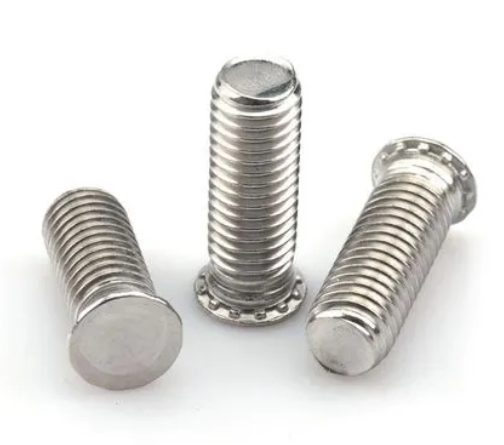The Differences between Pressed Rivets and Tapping Screws
Time:2023-11-24 11:20:26 Source:未知 Click:次
In many engineering projects, screws are commonly used tools for connecting two or more components. However, there are various types of screws, including pressed rivets and tapping screws. Although they are all used for connecting components, their usage methods, characteristics, and application fields are different. This article will detail the differences between pressed rivets and tapping screws.
Firstly, let's look at what a pressed rivet is. A pressed rivet is a type of screw that forms a reliable connection by plastically deforming the material through pressure. It is typically used for connecting thin plates or sheet metal, as the thickness of this material is not sufficient to withstand the force required by traditional threaded connection methods. The use of a pressed rivet requires a specialized press machine and mold, and the operation process is relatively complex.
On the other hand, a tapping screw is a type of screw that can create its own thread in the material it is being connected to. A tapping screw can be directly screwed into the material without the need for pre-drilling. Therefore, tapping screws are often used for connecting softer materials such as wood or plastic, or for connecting thicker metal materials. The use of a tapping screw is relatively simple, and can be completed using a regular screwdriver.
Next, let's look at the main differences between pressed rivets and tapping screws:
1. Connection Method: As mentioned earlier, a pressed rivet forms a connection by plastically deforming the material through pressure, while a tapping screw creates its own thread in the material it is being connected to.
2. Application Material: Due to the fact that a pressed rivet needs to form a connection through pressure, it is often used for connecting thin plates or sheet metal. A tapping screw can be applied to various softer materials, or thicker metal materials.
3. Tools Used: The use of a pressed rivet requires a specialized press machine and mold, and the operation process is relatively complex. In contrast, the use of a tapping screw is relatively simple and can be completed using a regular screwdriver.
4. Strength: Because a pressed rivet forms a connection by plastically deforming the material through pressure, its connection strength is usually higher. While the installation of a tapping screw is convenient, its connection strength may not be as strong as that of a pressed rivet.
In summary, pressed rivets and tapping screws each have their own advantages and disadvantages, and are suitable for different application scenarios. When choosing which type of screw to use, we need to consider the specific needs of the project. We hope this article helps you better understand and choose the appropriate type of screw for your needs.


